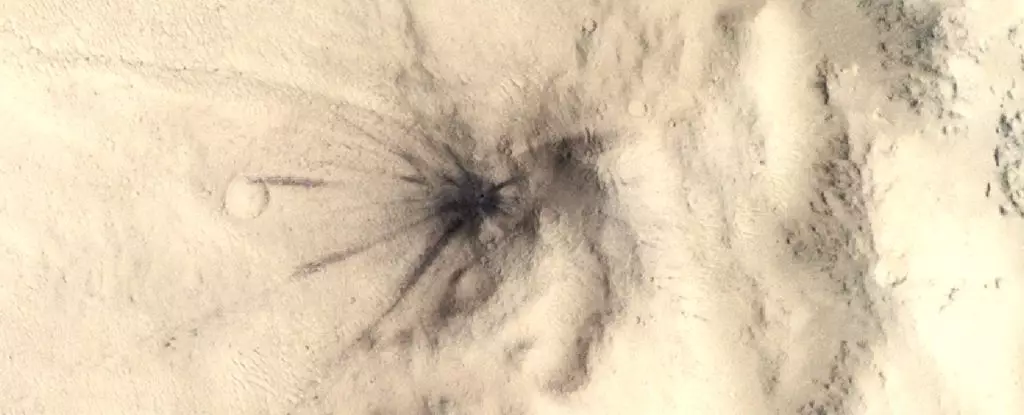The surface of Mars, often described as a desolate and dusty wasteland, is hiding a vibrant and complex geological history that is only beginning to come into focus, particularly with recent advancements in seismic research. The study of marsquakes—that is, seismic activity on Mars—has taken a revolutionary turn thanks to a new application of artificial intelligence. This groundbreaking research has exposed a surprising dimension of seismic activity on the Red Planet; specifically, it highlights that many marsquakes are not the result of tectonic movements but rather are triggered by meteoroid impacts.
This discovery fundamentally alters our understanding of Mars’ geophysical processes and challenges the previous notion that the planet is largely dormant. By leveraging data derived from the Mars InSight lander, which operated from 2018 to 2022, researchers have been able to shed light on the internal dynamics of this mysterious planet. The InSight mission recorded over 1,300 seismic events, revealing that Mars is more active than scientists initially believed.
At the heart of this research is a machine-learning algorithm utilized to examine images and data from Mars’ surface. The team, led by planetary scientist Valentin Bickel of the University of Bern, meticulously cross-referenced seismic data with imagery collected by the high-resolution camera onboard the Mars Reconnaissance Orbiter. This combination of tools allowed for an unprecedented identification of 123 new impact craters during InSight’s mission, revealing a clear link between these craters and the marsquakes detected.
By associating 49 seismic events with specific impact occurrences, researchers have not only increased the tally of significant meteoroid impacts but also refined estimates regarding their frequency. The findings suggest that the rate of impactful events on Mars is approximately 1.6 to 2.5 times higher than earlier assessments, prompting a reevaluation of the planet’s geological activity and previous assumptions about its surface processes.
The implications of these findings extend beyond merely updating impact rates; they compel scientists to reconsider established theories regarding Mars’ geological history and the composition of its interior layers. One significant finding pertains to the way seismic waves travel through the planet. Initially thought to be limited mainly to the crust, these waves have been shown to penetrate deeper, moving into and through the Martian mantle via what researchers describe as a “seismic highway.” This alters the understanding of how different types of seismic waves interact with various layers within Mars.
Moreover, the analysis draws attention to Cerberus Fossae, a geologically young region with intense seismic activity. Previously interpreted as a hotbed for tectonic activity, the new evidence indicates that many tremors previously attributed to internal geophysical processes could actually be the result of meteoroid impacts. This revelation suggests that scientists must reexamine not only the implications of seismic data collected by InSight but also the broader geological interpretations of the Martian landscape.
As the second most studied planet in our solar system, Mars has long captivated scientists with questions regarding its history and potential for supporting life. The new seismic data, enhanced through the application of state-of-the-art AI tools, allows for deeper insights into not just Mars, but the geological evolution of rocky planets like Earth and Venus as well. These insights are crucial in piecing together how planetary bodies evolve over time, particularly in relation to seismic activity and impact events.
In the greater landscape of planetary science, this research serves as a potent reminder of the constant evolution of our understanding. It underscores the importance of incorporating new technology and methodologies to unravel the mysteries of other worlds. The newfound knowledge surrounding marsquakes, while exciting in its own right, serves as a stepping stone toward a more comprehensive understanding of planetary dynamics across the solar system.
In summation, the ramifications of this research shape a transformative narrative for our understanding of Mars. As new data emerges, driven by innovative analytical techniques, it is apparent that the Red Planet is an active participant in the cosmic dance rather than a relic of a bygone era. Through the lens of AI and data analytics, a clearer picture of the Martian interior is starting to take shape, one that promises to redefine our future investigations and inspire a new generation of astronauts and scientists to continue the quest for knowledge about Mars and beyond.


Leave a Reply